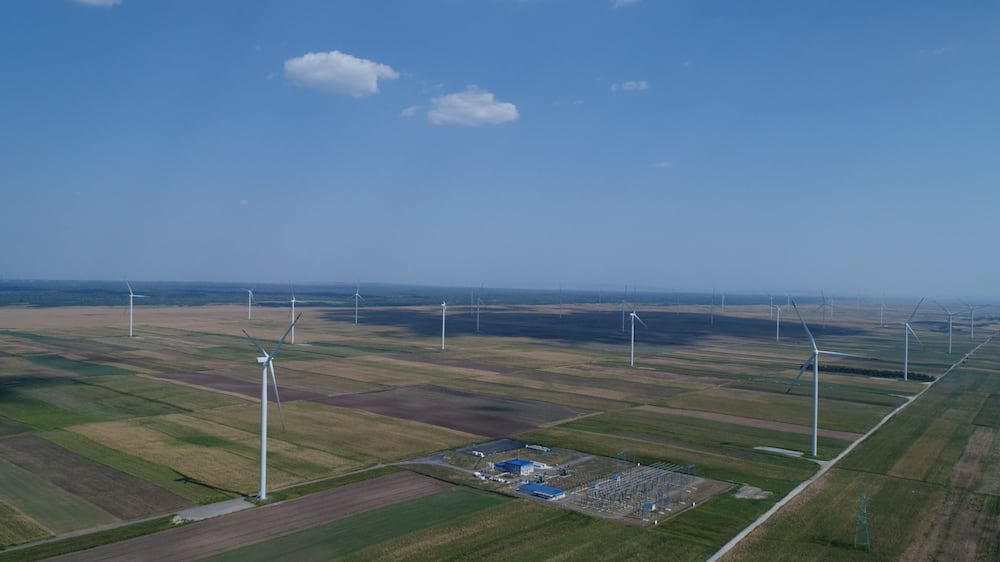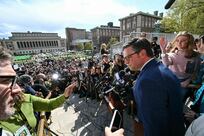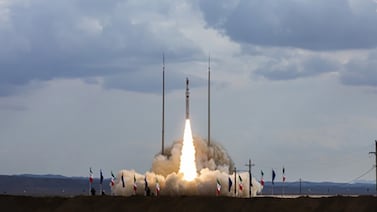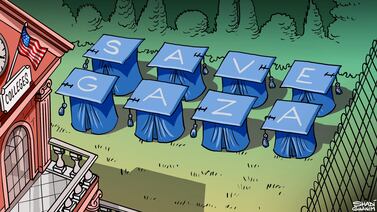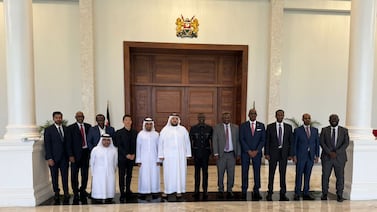This article was produced in partnership with Irena
The International Renewable Energy Agency envisages a very different world.
It is one where a dramatic rise in electric vehicles and renewable technologies will affect our everyday lives. Many of us will require different roles and skills for jobs in the next few years – and how we live our lives will have to change.
The Abu Dhabi-based, intergovernmental organisation today sets out its “1.5˚C scenario”, in line with the goals of the 2015 Paris Agreement. Its scenario gives a glimpse into not only the environmental benefits of tackling planet-warming emissions, but the economic ones as well.
It is an optimistic vision, but comes with a warning too: We have no time for talk, promises and rhetoric.
In its latest annual report it envisages coal being “phased out”, and investments in oil and gas “limited to facilitating a swift decline and a managed transition”.
Economies already heavily dependent on oil should move into carbon capture and storage, the agency says.
“Carbon capture and storage technologies should facilitate an energy transition in economies heavily dependent on oil and gas and provide a transitional solution where no other options exist,” said the report.
Innovation should target emerging technologies most likely to become competitive in the short-term and most effective in achieving emissions reductions in the long term.
Investments should support the path most likely to drive down energy emissions, said the agency.
And policies should promote “resilience, inclusion, and equity,” ensuring workers and communities adversely affected by the transition to more renewable sources of energy are protected.
Each region and country will progress at its own pace, it said.
Running out of time
A rapid decline in emissions “must begin now” to prevent the temperature from rising more than 1.5°C over pre-industrial levels by 2050.
But current policies will do no more than stabilise global emissions, with a “slight drop” as 2050 approaches, the agency said in a new report.
“We have no time,” said Francesco La Camera, director-general of Irena in a foreword to the report.
“The window is closing and the pathway to a net zero future is narrowing.
“A consensus has formed that an energy transition grounded in renewable sources of energy and efficient technologies is the only way to give us a fighting chance of limiting global warming by 2050 to 1.5°C.

“Only a few years ago, the renewables-centred approach espoused by Irena was considered too progressive, idealistic or even unrealistic.
“Today, our vision has become mainstream.”
He said that the demands were great and full of uncertainty.
“We are entering a new era of change, one in which energy transformation will drive economic transformation,” said Mr La Camera.
“This change is bringing unprecedented new possibilities to revitalise economies and lift people out of poverty. But the task ahead is daunting.”
The world needs to embrace technology, policy and market solutions that will take it forward, he said.
“Economic and human development goals, environmental concerns, and financial avenues must all be reconciled,” he said.
But the changes will have a marked impact on society, affecting everything from the jobs people will do in the future to the way they live their lives.
Here are three of the biggest:
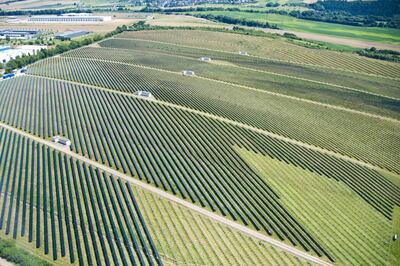
Jobs
The energy sector will employ tens of millions of people, providing around 122 million jobs in 2050.
Jobs in renewable energy will rise from more than 11.5 million today to 43 million in 2050.
Most of them, 38 million, will be created in the next decade, meaning there were will be lots of opportunities for those entering the workforce or looking for jobs.
“We estimate that there will be at least three times more jobs in renewables,” said Elizabeth Press, director for planning and programme support at Irena.
Some of the skills required will be transferable.
But there will also be many jobs in the renewable energy industry that do not yet exist.
“There are additional skills that are required,” said Ms Press.
But many of the top 10 professions in the world did not exist a decade ago, she said.
The report predicts solar technologies will account for the largest share of jobs, followed by bioenergy, wind and hydropower.
“Construction, installation and manufacturing boost renewable jobs during the following decade, with operation and maintenance gaining relative weight as the transition advances,” it says.
Jobs are currently concentrated in areas like the installation and manufacture of renewables technology.
But they are being created in other areas, including construction, in operations and maintenance across a number of countries.
“Construction, installation and manufacturing [will] boost renewable jobs during the following decade, with operations and maintenance gaining relative weight as the transition advances,” it says.
Other jobs may be created in manufacturing and services, says the report.
Fossil fuels will not be switched off overnight, and will still exist to an extent even after renewables come to dominate, said Ms Press.
“We're not just going to switch off fossil fuels tomorrow and say, 'well OK now we're going to be renewable'," she said.
“It's a transition, so this is why we have a plan for 20 years.
“Some of this can be managed by attrition, some of it can be managed by retraining. Obviously, that is something that governments have to plan well in advance.”
The sector would also benefit from attracting new talent.
Women make up 32 per cent of the workforce, which is higher than the 22 per cent of the energy sector overall, but not high enough, according to Irena.
“It is evident women represent a pool of talent yet to be fully utilised,” says the report.
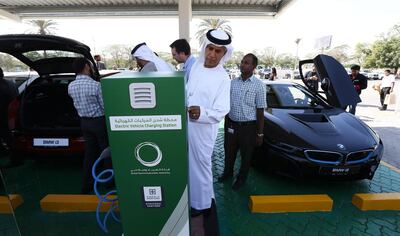
Transport
Electricity will make up the biggest single share of energy generation in the future.
And in no sector will the impact be more apparent than in transport.
Electric vehicle sales currently account for only 4 per cent of all sales, but will rise to 100 per cent by 2050, up from 7 million in 2020 to 1.8 billion in 2050, when electric vehicles will account for 80 per cent of all road transport.
But major improvements in technology are required first.
The report predicts stationary battery storage will more than triple between 2018 to 2050.
“Technology is improving very, very rapidly and all the large car makers have made commitments and deadlines on electromobility. That means there's going to be a lot more innovation around this, because they know they don't make these commitments unless they have a very clear strategy in place to shift,” said Ms Press.
Car makers with commitments to go green include Volvo, which aims to become a fully electric marque by 2030.
Other companies like BMW aim for half of sales to be in electric cars.
But countries will have to upgrade their infrastructure to cope with the growth.
That will lead to some in the Third World leapfrogging advanced economies, said Ms Press.
“In Rwanda, there is a company that is refurbishing normal motorbikes with batteries that are replaceable, and it just got some funding from Silicon Valley because the market is enormous in the global south,” said Ms Press.
“So when you think about it, why would they ever develop an infrastructure when they can have that sort of infrastructure developing right now?
“So, some leapfrogging will definitely happen.
“It is the great equaliser.”
Policies to promote electric vehicles will also continue to increase, further driving the growth in the market.
“All of the top markets for electric vehicles to date, for example China, Norway and the United States, have introduced such policies.”
Norway has a high percentage of electric vehicles as a direct result of policy, said Ms Press.
“They have a lot of inexpensive electricity, and they have put several incentives in place, so everybody in Oslo drives a Tesla,” she said.
“Because you don't have to pay for the parking, you can end up charging for free, because the electricity is so inexpensive.”
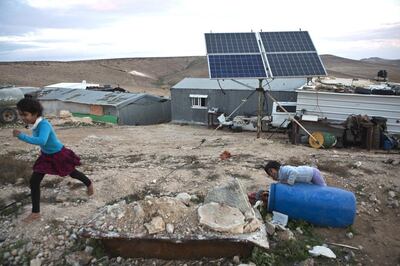
Innovation
Technology will become even more integrated into everyday life.
Significant progress has already been made in areas like battery storage, solar power and the Internet of Things.
But that will accelerate, contributing to the rise in the use of renewable technologies, said Irena.
And the growth will partly be driven by people, who will install technologies like solar panels, or even mini wind turbines on their properties.
“What I find super exciting about renewables is it is everybody's business,” said Ms Press.
“Suddenly you will have a lot more control over what you want to have in your life and you can participate. You can actually be part of the system.”
Technologies like blockchain – a tamper-proof ledger of every transaction made in a system – will increasingly be used to share the proceeds of investments into solar energy and other technologies.
Ms Press already takes part, and says these transactions will become more common.
She bought solar panels at a school in South Africa, which uses the power for itself and sells whatever is left over back to the grid.
“Somehow I get paid from the electricity because part of it goes into the school but part of it goes into the market,” said Ms Press. “I don't know the nitty-gritty, but what I found super interesting is I'm sitting in Europe, and I am participating in something that matters to me as a person and I actually don't mind if I earn money or not.
“But it's a lot more fun to look on my app to see what it's like in South Africa right now. How school is going, how it’s feeding into the grid. Seeing all that makes you feel a part of something bigger.”
